The Amazing X-Files Episode That Happened Because Show’s Creator Messed Up
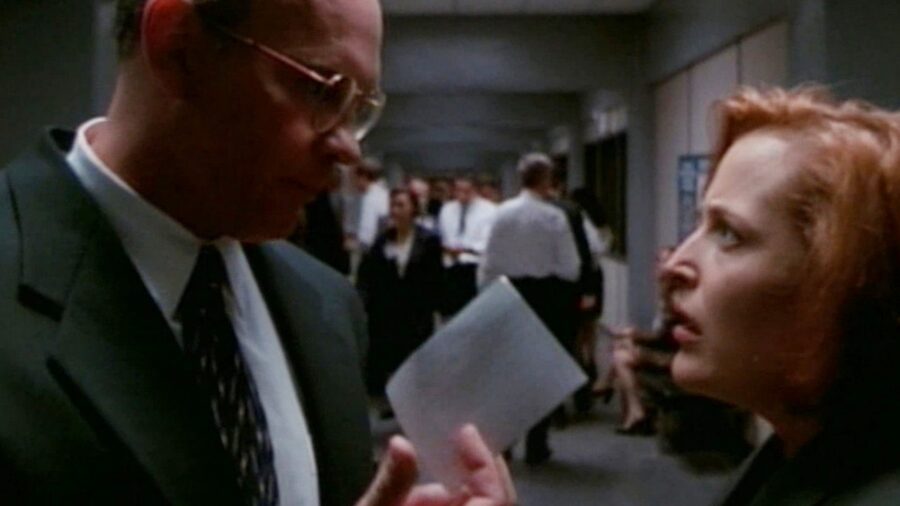
Early in Season 6 of The X-Files came one of the show’s most interesting episodes. “Triangle” finds FBI Special Agent Fox Mulder transported not only back in time to the dawn of World War II, but to some kind of alternate reality in which all the key figures in his life assume era-correct roles like German officers and American spies. It all happened because series creator Chris Carter used way too much film making the Season 5 episode “The Red and the Black.”
The Red And The Black
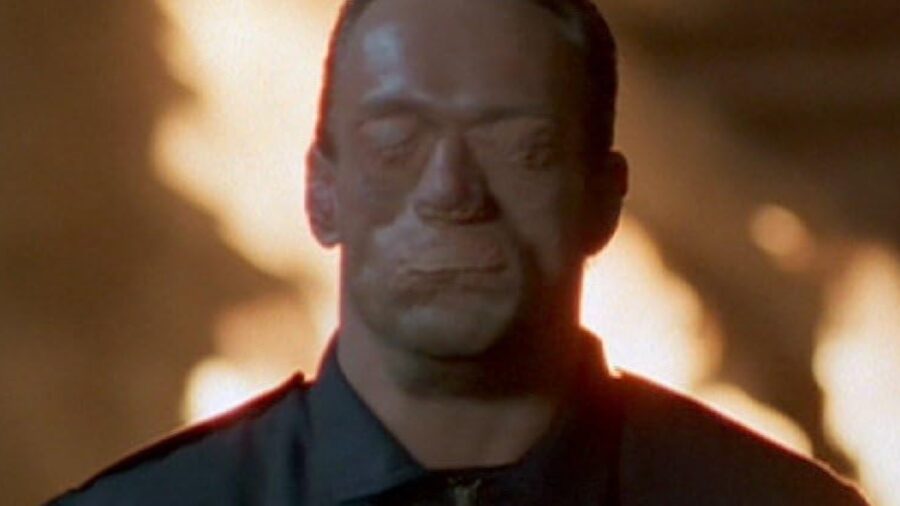
“The Red and the Black” proves to be one of the more crucial episodes of The X-Files in terms of the show’s UFO mythology. Season 5 begins with a 3-part story that convinces Mulder aliens aren’t real, and that all the evidence to the contrary has been planted to distract from other government sanctioned covert crimes. “The Red and the Black” is the story that gets Mulder back on the “no, actually, they’re totally real” track.
The episode was important enough that Chris Carter directed it himself, and the way he directed it inspired “Triangle” in a roundabout way. Carter used so much film making “The Red and the Black,” that the crew made him a joke trophy for it.
In response, Carter decided he wanted to make an episode with as many long, continuous shots as he could manage, hence using less film. The result was “Triangle.”
The Queen Anne
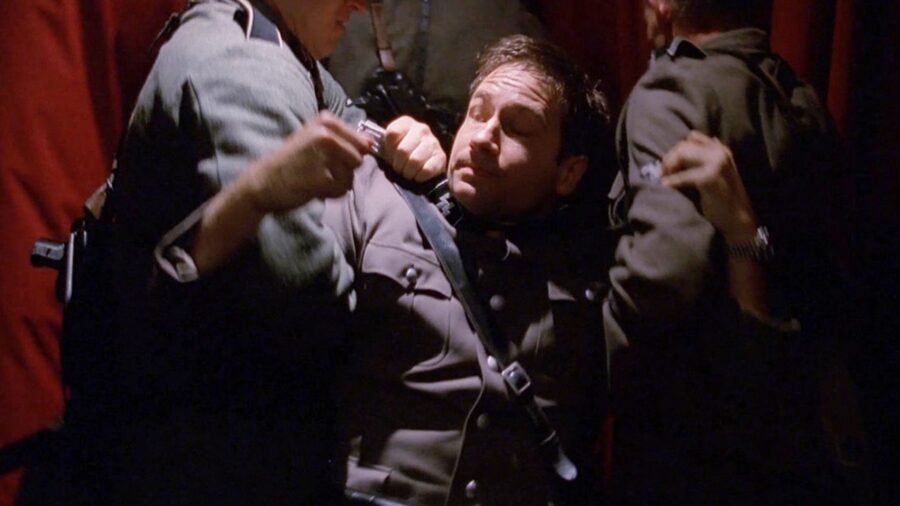
Because he does the last kinds of things anyone should ever do, in “Triangle” Mulder goes looking for the Queen Anne—a World War II era luxury liner that, in real life, was sunk by a German U-boat—in the Bermuda Triangle. His ship sinks and he awakens after he’s pulled out of the drink by English sailors in 1939.
In spite of the crew suspecting he’s a German spy and threatening to drown him, Mulder seems absolutely tickled by the development. Rather than traveling back in time, he thinks “Triangle” has sent the Queen Anne forward to 1998.
He is disabused of this misconception when he switches on a radio and hears news reports about Germany’s refusal to withdraw from Poland.
Unfortunately, “Triangle” finds Mulder dealing with more than just needing to get back to the present. Before he can do that, Mulder needs to stop the Germans from finding the scientist on board who could potentially build them a war-winning atomic bomb.
As Carter promised, all of “Triangle” is told in a series of long, continuous shots.
No One’s Left Behind
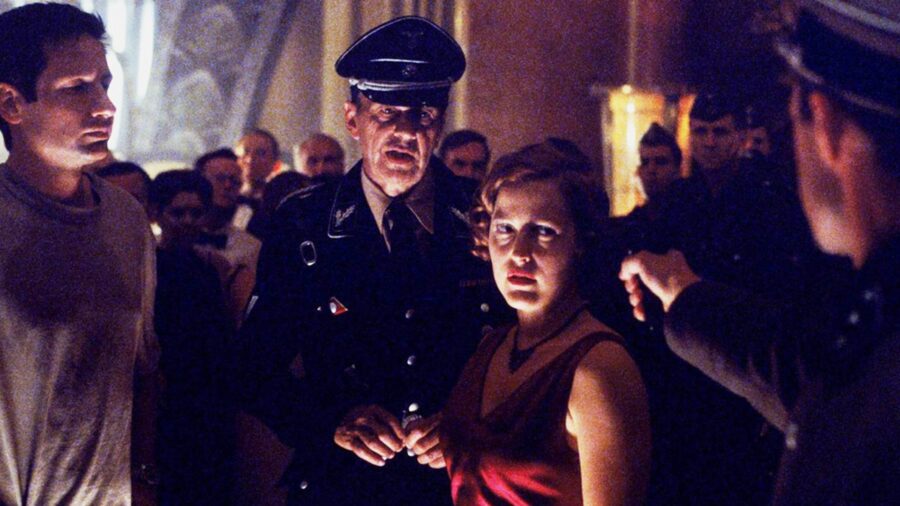
The first sign that “Triangle” isn’t just a time travel episode—but an alternate dimension hopping episode—is that Mulder soon learns the Queen Anne has a lot of familiar looking faces aboard.
The SS officer commanding the German troops who board the ship is played by William B. Davis, best known for playing the nefarious Smoking Man. His subordinates include officers played Chris Owens (Agent Spender in the present) and Mitch Pileggi (A.D. Skinner).
In the belly of the ship is James Pickens Jr. (A.D. Kersh) who wants to steer the boat to Jamaica, and guarding the atomic scientist is Gillian Anderson—Dana Scully herself—as an era-appropriate OSS agent.
Back In 1998
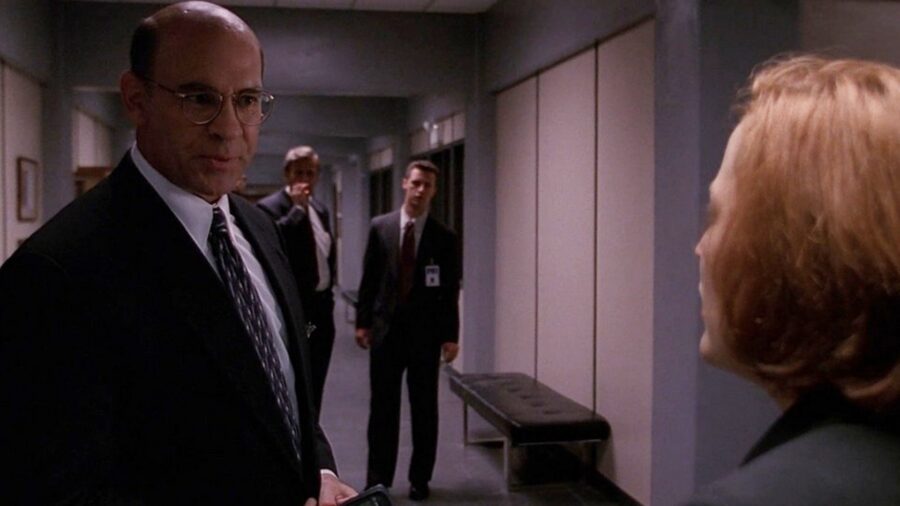
You might understandably suspect that rather than a time travel episode or an alternate dimension hopping episode, “Triangle” was more of an episode showing us Mulder’s delusions, except he’s not the only one dealing with it all.
Back in 1998, the Lone Gunmen arrive at FBI headquarters in a panic, telling Scully about where Mulder went and that he’s now disappeared. Once more in a series of long, continuous shots, “Triangle” follows Scully around the FBI office as she desperately tries to get help locating Mulder.
Once Scully and the Lone Gunmen find the Queen Anne, however, there’s no Mulder on it, no Nazis, no English sailors, or anyone else. Instead, “Triangle” splits the screen, showing us the action in the past alongside Scully and the Gunmen in the present.
FBI HQ As A Workplace
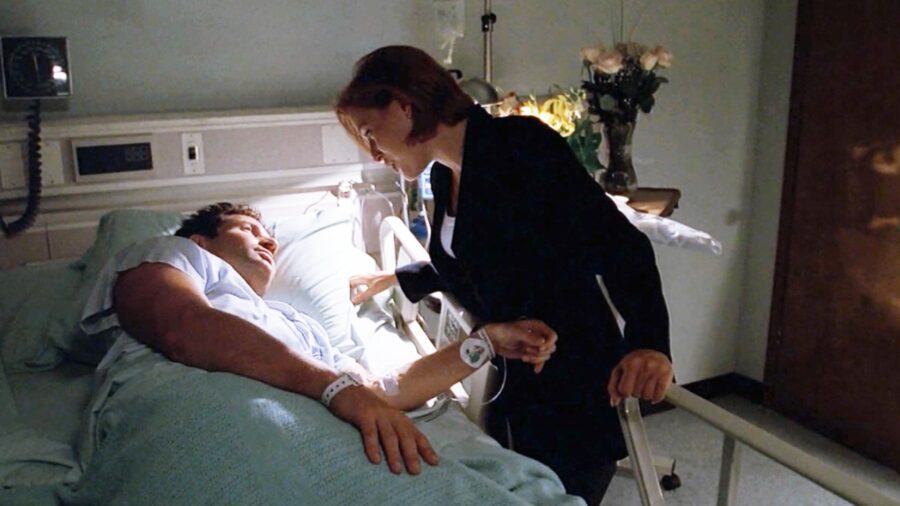
There are a lot of things to love about “Triangle,” but what sticks with me the most is how—more than any other episode of The X-Files before or after—you get to see FBI Headquarters as a real, tangible workplace.
We see where Scully and Mulder work plenty of times before “Triangle,” but Carter’s determination to film the episode in a series of long, continuous shots gives us the opportunity to get a more intimate feel for the place.
We don’t just see, for example, Scully get up from her desk and the next second she’s talking to A.D. Skinner or Agent Spender. We follow her down hallways and on elevator rides, and we see exactly where all the offices are in relation to everything else.
There’s a wonderful de-mystification aspect of it that for at least the length of “Triangle” makes you think of the FBI office as less of an impenetrable government-run locale with the Smoking Man potentially hiding around every corner, and makes it feel as mundane as Dundler Mifflin in The Office or Pawnee Town Hall in Parks & Recreation.











